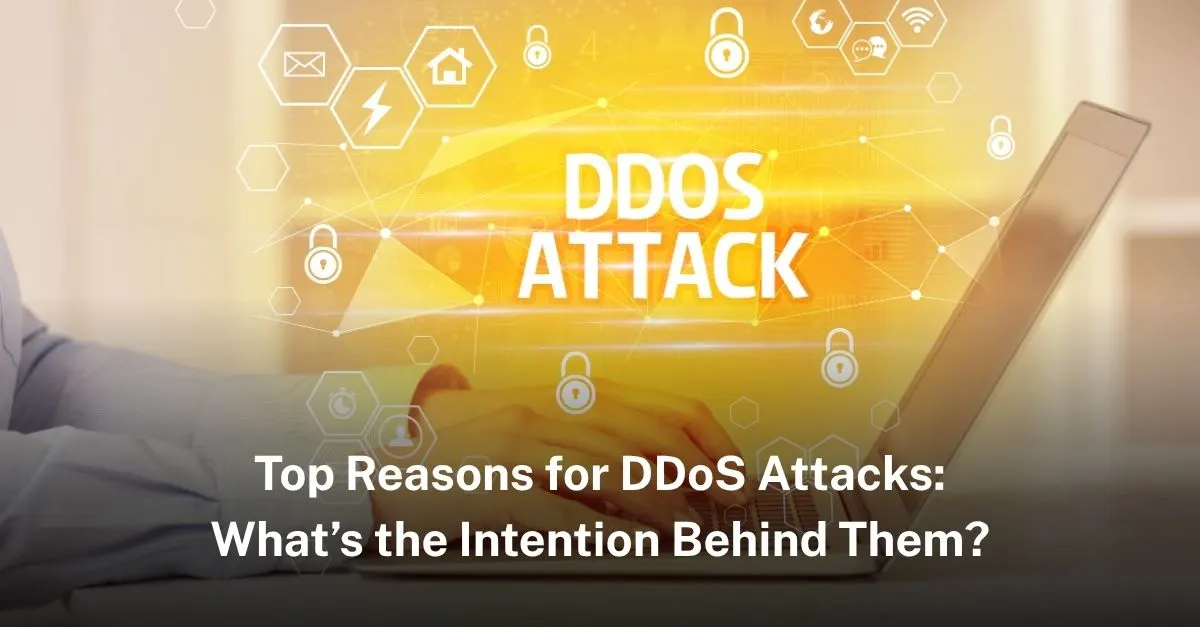A Distributed Denial of Service (DDoS) attack occurs when multiple systems overwhelm a server or network with an immense amount of traffic, rendering the target unable to function properly. These attacks are disruptive and can have serious financial and reputational consequences. But what are the underlying reasons behind DDoS attacks? Here’s a breakdown of the top motivations.
1. Financial Gain (Ransom)
Cybercriminals often launch DDoS attacks for monetary reasons, either directly or indirectly. For example, an attacker may use a DDoS attack to extort businesses by threatening to keep their services offline unless a ransom is paid. This is known as ransom DDoS (RDoS). In some cases, the mere threat of a DDoS attack can force companies to pay large sums to avoid the damage it can cause to their operations.
2. Business Rivalry
Corporate sabotage through DDoS attacks is not unheard of. Competitors may hire attackers to cripple a business’s online operations by disrupting their services, making their websites inaccessible to customers. This results in lost revenue and a tarnished reputation, giving the rival an unfair advantage. Such attacks are most common in industries heavily relying on online services like e-commerce, gaming, and finance.
3. Hacktivism
DDoS attacks are also a popular tool for hacktivists, who aim to protest or bring attention to political, social, or environmental issues. Groups like Anonymous have been known to target government websites, corporations, and other organizations they perceive as unethical or harmful. The intention is not always financial but instead to disrupt services and raise awareness for a particular cause.
4. Cyber Warfare
In the context of cyber warfare, DDoS attacks are a method used by nation-states or politically motivated groups to attack critical infrastructure. The goal may be to weaken a government, disrupt communications, or impair a country’s economy. By attacking essential services like banking, healthcare, or energy, the aim is to create chaos and panic.
5. Testing Security Vulnerabilities
Surprisingly, some DDoS attacks are launched to test security systems. Cybersecurity professionals may orchestrate a controlled DDoS attack on their systems to identify weaknesses and improve their defenses. However, malicious hackers might do the same to probe the defenses of a company or government system before launching a more damaging attack later.
6. Distraction for Other Cybercrimes
DDoS attacks are often used as a smokescreen to distract security teams while other, more harmful cyber activities take place. While IT teams are focused on resolving the DDoS attack, attackers may use the opportunity to infiltrate the system, steal data, install malware, or execute financial fraud.
7. Personal Vendettas
In some cases, individuals may launch DDoS attacks out of revenge or personal grudges. Disgruntled employees, angry customers, or individuals with a grudge against a particular organization may hire hackers or use easy-to-access DDoS tools to take down websites or disrupt services as an act of retribution.
8. Botnet Demonstrations
DDoS attacks are often executed using botnets—networks of infected computers controlled by cybercriminals. Sometimes, these attacks are carried out to demonstrate the power of a botnet to potential buyers in the cybercrime market. Once proven, these botnets can be sold or rented to other criminals looking to execute their own DDoS attacks.
DDoS attacks are not just random acts of disruption; they often have clear intentions behind them, ranging from financial extortion to political activism. Understanding the motivation behind DDoS attacks helps businesses and organizations prepare better defenses, ensuring that they can mitigate the impact and protect their digital assets.










Leave a Reply